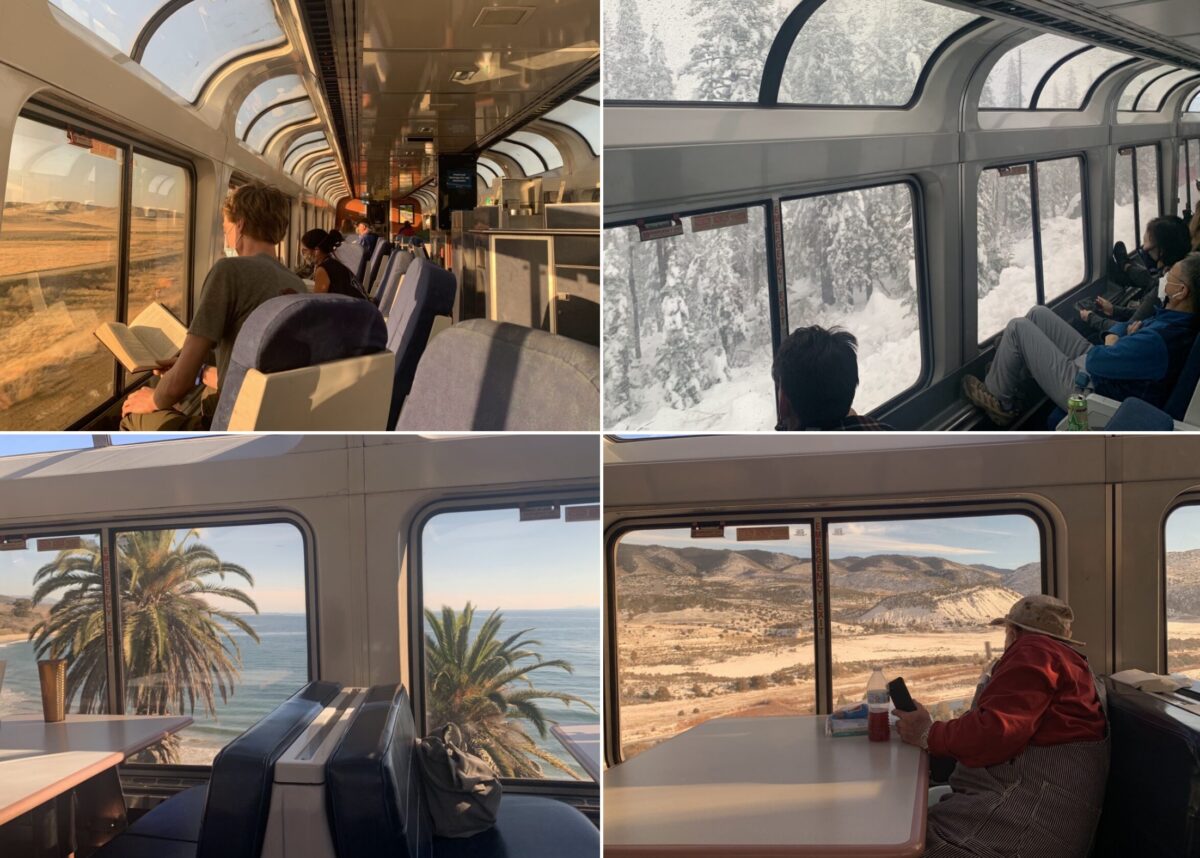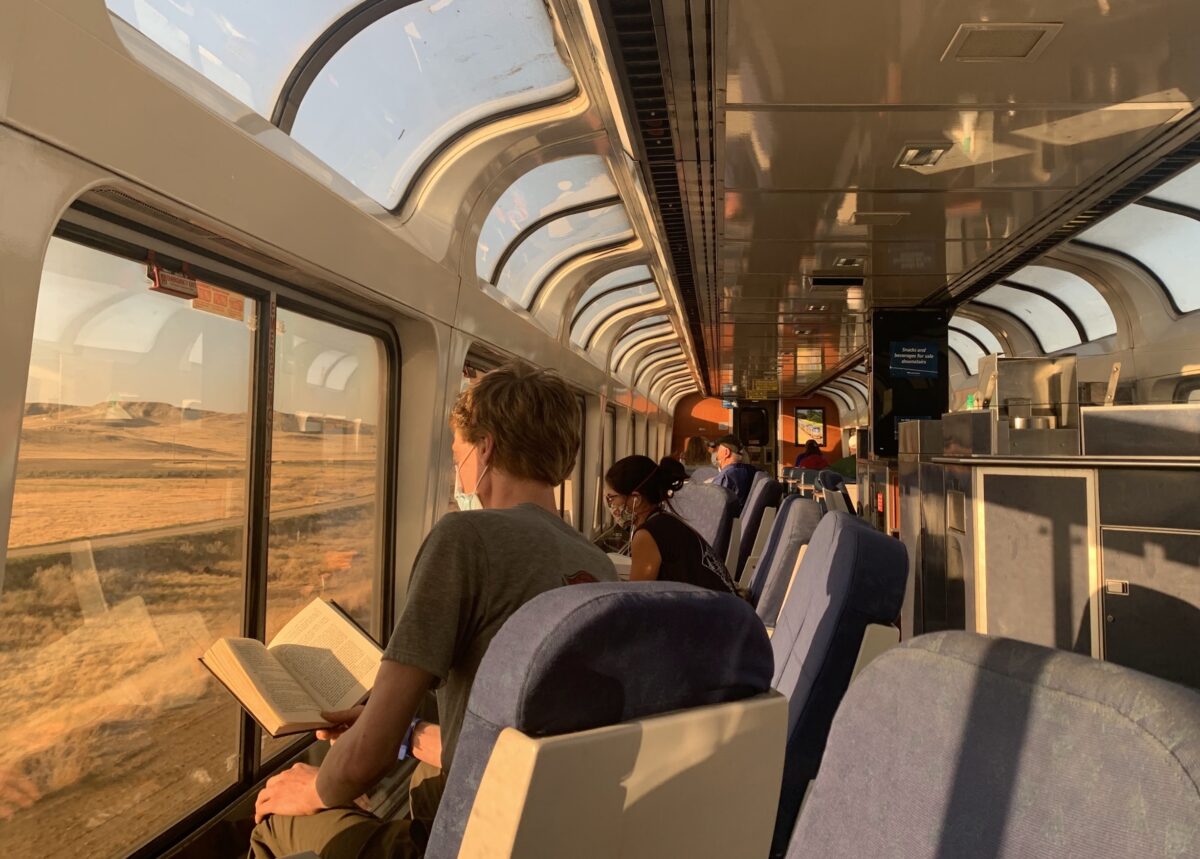
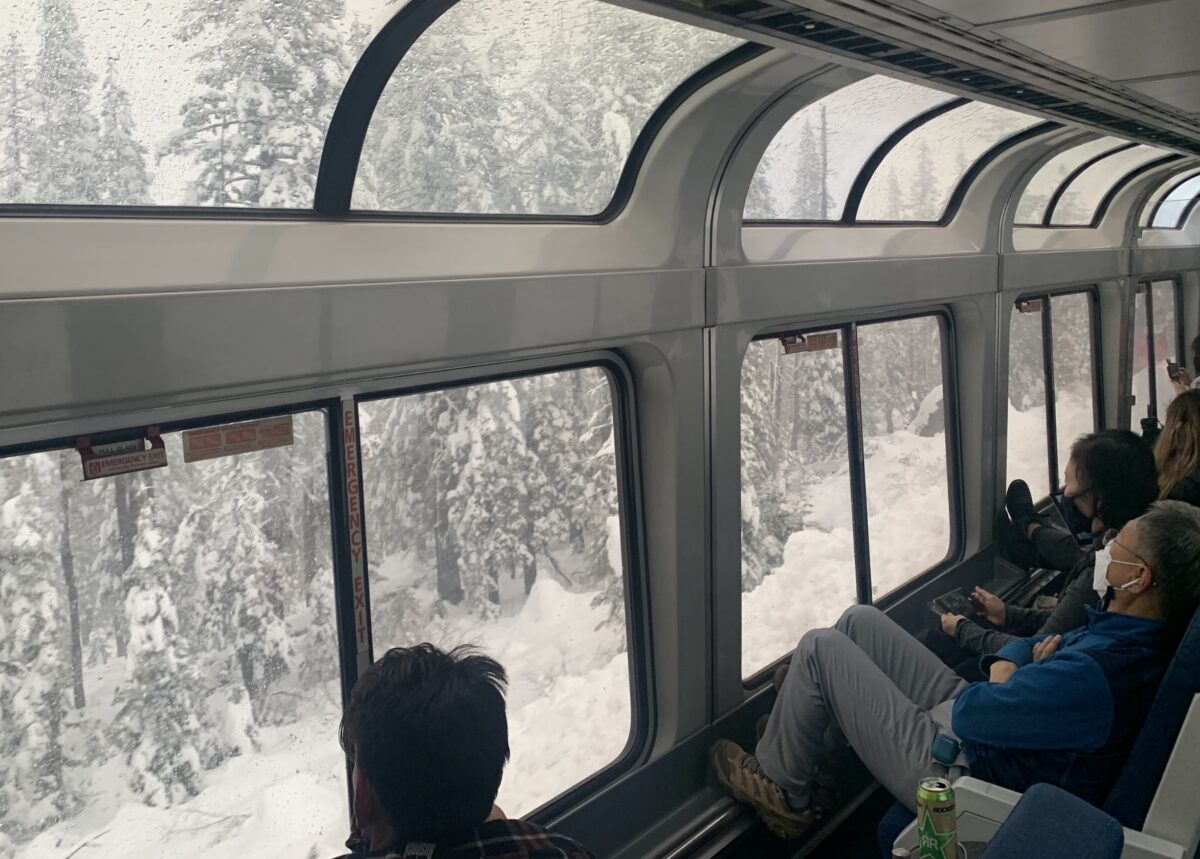
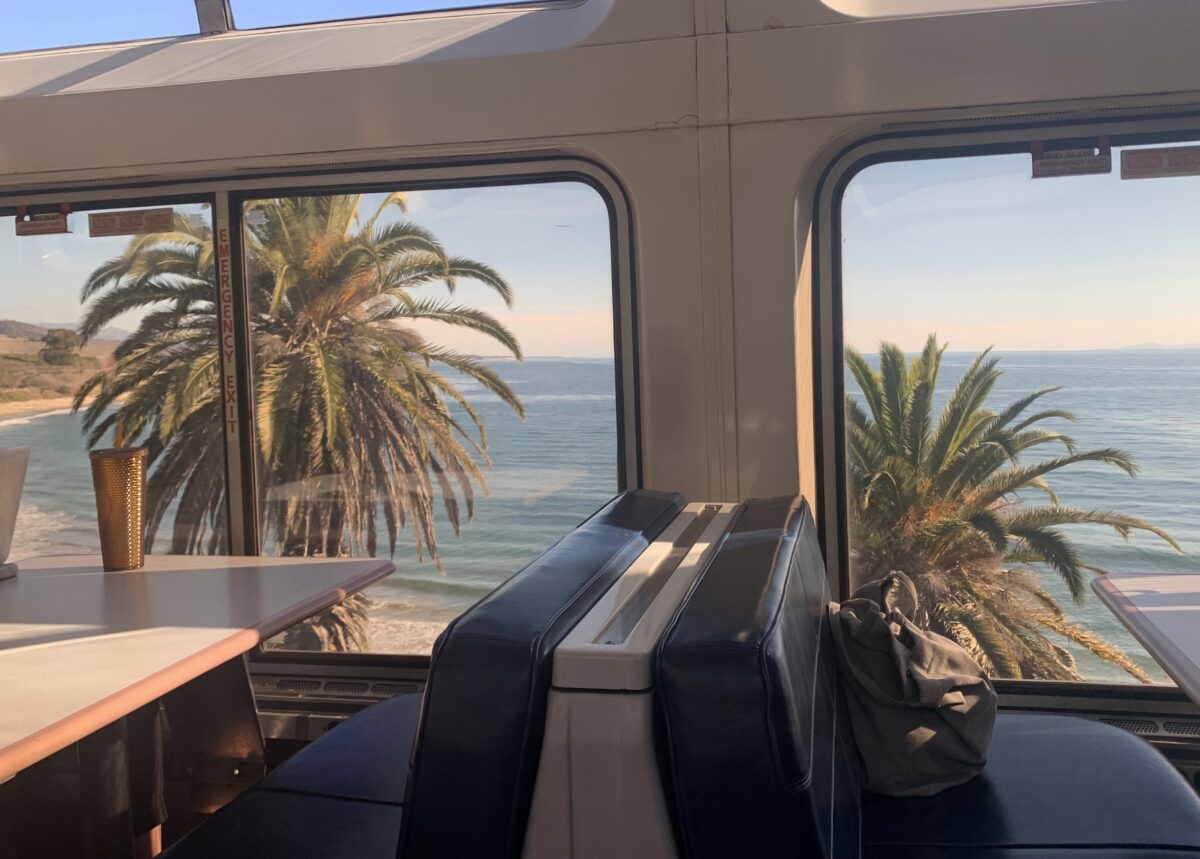
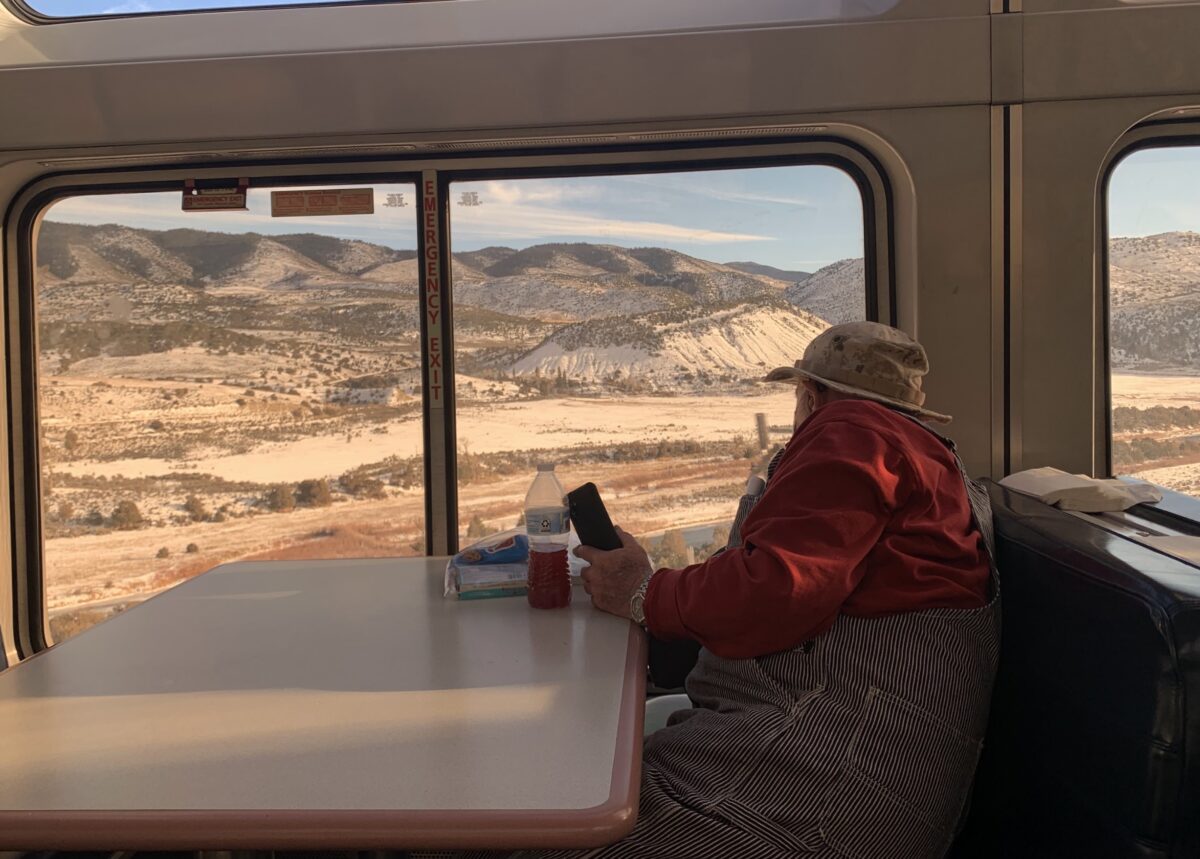
(Reporter Taylor Griggs wrote this article while riding Amtrak over the holiday break.)
I started thinking about the way I travel long distances around the same time I started thinking a lot about the way I travel around a city, spurred by realizing how big of an impact transportation has on the environment and our quality of life.
While it would’ve been great to get from LA to the Bay Area in less than three hours, I genuinely loved almost every minute of the 10-hour ride I took along California’s gorgeous coast.
Around the time when the world watched Greta Thunberg sail across the Atlantic rather than take a plane — and right before the pandemic changed traveling completely — I started hearing more discussions about the ethics of traveling via airplane, and I was compelled to start an experiment to push train travel in the United States to its realistic limits, just to see if I could.
There are three Amtrak routes that you can take out of Portland’s Union Station: the Cascades, which you could take up to Vancouver, Canada or down to Eugene; the Coast Starlight, which extends from Seattle to Los Angeles; and the Empire Builder, which can take you all the way to Chicago. This year, as I amped up my goal to push sustainable transit to its limits, I’ve completed my mission to travel almost the entire length of all of the routes that you can hop on in Oregon, plus a few others.
The environmental impact of the aviation industry is somewhat hard to pin down: looking at the statistic that air travel accounts for only about 2.5% of global carbon emissions, you might be inclined to brush it off. But this number is relatively low because globally, only a relatively small number of people fly at all.
But those who fly have a disproportionate impact on carbon emissions. And although it’s unclear how the pandemic will change long-term travel habits, the aviation industry is poised to expand significantly in the coming years, even as climate experts warn of the dangers of growth. And have you seen the recent airport meltdown due to weather and Covid? Yikes!
Advertisement
Trains, meanwhile, are mostly drama-free. They’re also very efficient forms of passenger vehicle transport, and there’s a lot of potential to make rail even greener. And thanks to a national focus on the relationship between infrastructure and climate change since President Biden’s election, they’ve been getting a lot of attention lately. A well-functioning, robust and fast rail system in the United States has long been a white whale for environmentalists and people passionate about sustainable transit. American train enthusiasts look at high-speed trains zipping through Europe or Japanese and Chinese bullet trains with a mixture of awe and envy, wishing our politicians would designate funds to build similar systems.
Recently, young people have taken over the charge to make the American train — a form of transportation that’s been around since the 19th century — relevant again. With a similar mindset as the anti-freeway youth protestors in Portland, young people across the country are learning about the importance of sustainable transportation planning and promoting high-speed rail as the climate-friendly way to travel.
The United States only has one high-speed rail line, the Amtrak Acela Express, which runs through Boston and Washington, D.C. But due to tracks that haven’t been updated in years, the Acela often doesn’t actually get to its advertised speed of 150 mph. There is a high-speed rail project underway in California that is intended to connect the San Francisco Bay Area to Los Angeles in less than three hours, but it’s been slow going so far: voters passed funding for this project in 2008 and it still hasn’t come to fruition.
High-speed train rides that are as affordable as plane tickets would make taking the train a much more attractive option for people who have places to go and people to see and can’t afford to spend a day or two staring out the window.
But I also think it’s important to point out the benefits of American train travel as it is. While it would’ve been great to get from LA to the Bay Area in less than three hours, I genuinely loved almost every minute of the 10-hour ride I took along California’s gorgeous coast, where I could catch glimpses of surfers from the observatory car. On these long train trips, you’re able to see parts of the country that you can’t see any other way. If you’re only seeing your journey from 30,000 feet in the air or from the highway, you’re missing out on some truly beautiful views.
Advertisement
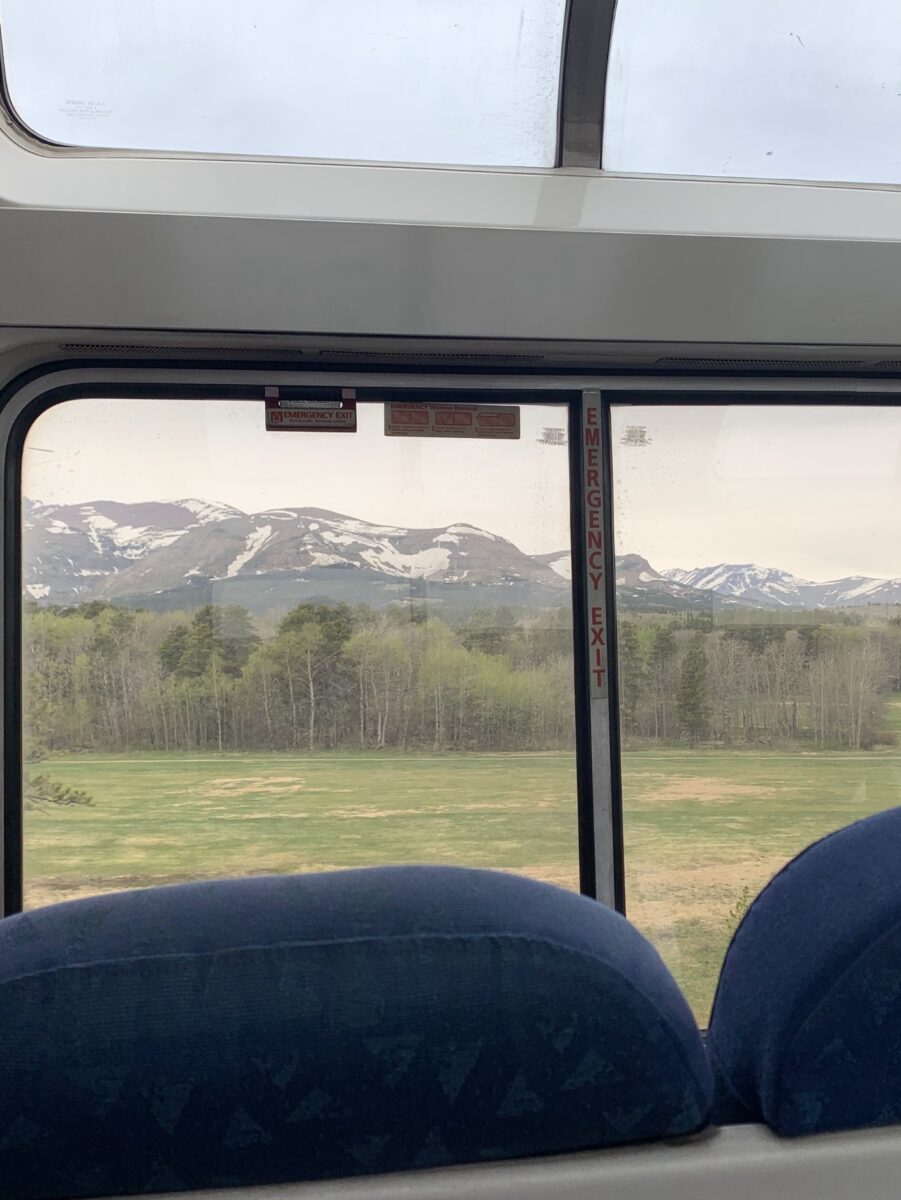

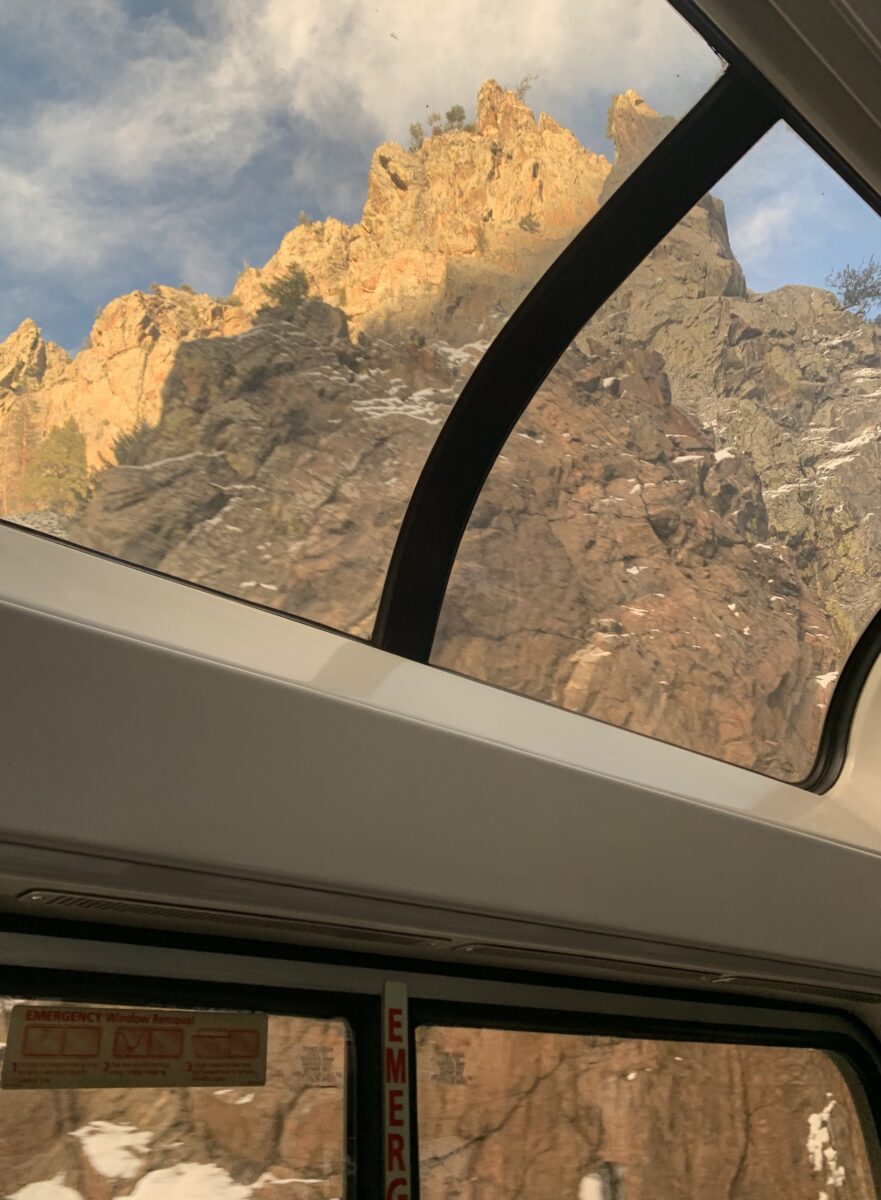

On a recent trip I took on the California Zephyr Amtrak route from Emeryville, California to Denver, Colorado we made our way through the Sierra Nevadas with no highway in sight (and no fear of slipping and sliding on the ice) as we watched the snow pile up to eight feet. The next morning, the conductor called everyone into the observation car to see Ruby Canyon, a red sandstone cliff canyon on the border of Utah and Colorado that only advanced Colorado River rafters — and train passengers — are able to see.
As BikePortland has shared, Amtrak trains are often bike-friendly, meaning cyclists can tow their bikes on their journey for a fee of $20 or less (on the Cascades route, it’s $5!). This is a lot less expensive than flying with a bike, and some travelers consider merging bike and train travel for a low-carbon way of getting farther.
“It doesn’t feel great to drive three hours to climb for a day.”
— Brooke Knutson, my outdoorsy friend
I reached out to my friend Brooke Knutson, an avid bike rider and outdoorsy person who has gone on van and self-supported biking trips up and down the West Coast and in Mexico who has used the train to get to a starting-off point, to ask about her experience taking her bike on Amtrak.
“I love traveling by bike. I think it’s the best way to travel,” Knutson says. “It’s made me realize how much you can travel and do things without needing to drive or fly somewhere.”
The experience of seeing the country from the unique vantage point of a train provides an entire new element to a trip, especially for environmentally-conscious people. I think basking in the beauty of places like Glacier National Park, the Sierra Nevadas and the Colorado River canyons is more rewarding when I’m traveling in a less carbon-heavy way.
Knutson says she has started to think more about the outdoor recreational activities she does to make sure she travels in line with her environmental values. This might mean less trips that require lengthy drives into the middle of the rural country, and more train-bike hybrid excursions.
“It doesn’t feel great to drive three hours to climb for a day,” Knutson says. “I want to go places that are accessible by bike.”
In a car-centric country that prioritizes the idea of short-term “personal convenience” at the expense of a habitable planet, I see using alternate means of transportation as a radical act. In most places in the United States, people who bike, walk or take public transit to work instead of driving alone are going against the grain, encouraging cities to build around people instead of cars in the process.
And although taking the train across the country instead of flying might seem drastic, encouraging other people — and the country’s infrastructure at-large — to be more hospitable to this idea could be a gamechanger for the climate and people’s ideas about why we travel in the first place.
